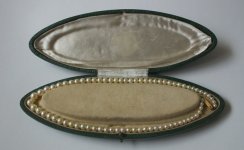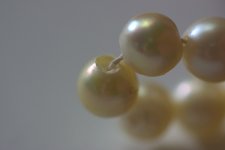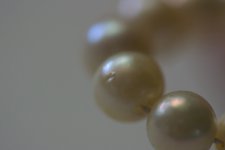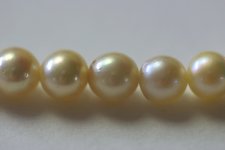I am happy to have found this forum as we have a pearl necklace and are in need of information and advice. This necklace was given to my mother-in-law in the late 50's or early 60's while she was living in India. They were in the green case as shown, but it doesn't seem to be the right case for them as the necklace is longer than the space for it. The 75 pearl necklace measures approx. 18" in graduating sizes from about 4mm-11/12mm. The clasp is gold but I see no marking of any kind. Her estate is being settled and these may be sold but we know nothing about them or their value. I had them looked at by an antique dealer who deals with jewelry and he declared them to be fakes but we are not so sure about that. From my unknowing eye, I can see some have greater luster than others, all are not perfectly round or even the exact same color. I have not been able to really find any information about pearls from India at that time. We live far from a major city so I have been searching online. I can take other photos if need be.
I would welcome any information or suggestions as to value, etc.
Thank you,
Susan
I would welcome any information or suggestions as to value, etc.
Thank you,
Susan






